
In the following paper we hypothesize about a new theory we created related with black truffle life cycle and when spores germinate, if they do it as males or females. We are working in order to prove it in coming research… I would love to hear your comments…
Cheers,
Marcos Morcillo and Xavier Vilanova
________________________________________________________________________
New considerations of Tuber melanosporum life cycle
Xavier Vilanova1, Marcos Morcillo1, Mónica Sánchez1, Herminia De la Varga1
1 Micologia Forestal & Aplicada. Camí d’Alfou sn, 08459 Sant Antoni de Vilamajor, Barcelona, Spain.
Corresponding author: xaviervilanova@micofora.com
Introduction
The black truffle, Tuber melanosporum Vittad., is an ascomycete fungi that produces ectomycorrhizal associations with different trees and shrubs (Mello et al. 2006). The black Périgord truffle is known by the organoleptic properties of their fructifications, that are naturally harvested under mediterranean regions, but also cultivated all over the world in orchards planted with inoculated seedlings. Since 2015 it is considered as a perennial culture for the European Union, although the production of inoculated seedlings is done since the 70s (Murat 2015), and thus the importance of study the species. After the publication of T. melanosporum genome (Martin et al. 2010), in the last years a huge progress has been done to unravel truffle life cycle (Le Tacon et al. 2016, Taschen et al. 2016, De la Varga et al. 2017). Nowadays we have more information about how the fungus live, in symbiosis with plants, and in soil. We have information coming from scientific research, from experimental truffle sites, wild forests and established truffle plantations.
Regarding research publications, we have an approximation to T. melanosporum life cycle. It is a heterotallic specie, mating is controlled by two idiomorphs called MAT 1 and MAT2 (Rubini et al. 2011). Truffles are the result of sexual reproduction, we know that a female individual (that can be either MAT 1 or MAT 2), found always as mycorrhiza, has to meet with a male one of the opposite mating type (whose origin can be different). Most of individuals acting as fathers come from germinating ascospores, as its principal function is the sexual reproduction (De la Varga et al. 2017, Taschen et al. 2016).
In different publications, it has been described that it exists, at root level, a kind of progressive exclusion of the female individuals harboring the mating type opposite to the dominant one, leading to have plantations with a patchy distribution of the mating types at root level, having each tree roots with individuals of only one mating type (Murat et al. 2013, De la Varga et al. 2017).
One of the practices that is widespread among truffle growers, specially in Spain, is to make the called “truffle traps”. This technique consists on doing holes or trenches around the trees and to introduce a substrate with a mixture of spores. In those substrates, the spores come from a mixture of different truffles, so a mixture of both mating types. In a recent publication (Murat et al. 2016) it was tested the efficiency of this technique and showed how truffle production could be promoted and localized in a few centimeters, opening also the possibility to better understand the role of ascospores.
Discussion
In our experiences along the years, when we observe the behavior of the spores throughout the different steps in the process of truffle production in managed plantations (plant production, plantation establishment and management techniques – substrate addition to increase truffle production – ) we have seen that:
- For the production of melanosporum mycorrhized seedlings, the inoculation takes place in march-april (in the northern hemisphere) observing the first mycorrhizae in October-November (observing the roots under a microscope). Moreover, using molecular techniques, as the Real-Time PCR (Parladé et al. 2013) it can be detected an increase of germinated mycelia, coming from the spores, from July. (unpublished data)
- Periodically, inoculated seedlings are analyzed to check the level of mycorrhization of the roots. When doing those analyses in nursery plants, but also in two years old trees, that have been planted in the field, non-germinated spores are detected. They remain in the substrate, near the roots, and apparently, they are viable spores.
- As it has been noticed in field experiences (data not shown) and in other publications (Murat et al. 2016), in the places where substrate has been applied truffles fructify 2 years after the application. The results of adding spores to the soil surrounding the trees are reflected as an increase of the production of truffle ascocarps, that are localized in the place where the substrate has been applied (Murat et al. 2016).
All those evidences make us hypothesize that the first germinating spores form the ectomycorrhiza, so that they could be “predetermined” to act as mother/female individuals, or they “choose” to germinate and act as mother/female elements and form the ectomycorrhizae. The other spores remain in the soil waiting to germinate next year or later. This could also explains why the results of applying substrates with spores are not seen after 2 years. Indeed, it has been reported the fructification of truffles in plantations with inoculated trees of two years old (data not shown). In this case, it could be explained by the germination of the spores that remained in the substrate, and that they act as male elements for the sexual reproduction.
This simple hypothesis could explain the behavior observed in the spores at the different stages of truffle life cycle. Currently, the mechanisms that determine that one individual acts as female or male element are unknown (genetics, environmental, molecular, etc.), but probably this function is determined. It could be that in the genome of each individual it was determined so that the first spores to germinate act as female element, that could entail an energy saving for the fungus, as well as an explanation to the rates of consanguinity described in some publications (Taschen et al. 2016).
The fact that T. melanosporum fructifies in traps with added spores after 2 years, and in young two years old trees planted in orchards, could be explained by this hypothesis. Both kind of fructifications could be promoted by the late germination of the spores that will act as male elements. In the example of truffle traps these male partners will come from the spores added to the substrate; for the young seedlings, they may come from the bank of spores remaining in the substrate of the plant. The question is that if this is like that, we should expect to have fructification in older plants maintained in nurseries. This has never been reported, probably the germination of the ascospores that will act as male elements is triggered by environmental signals and that is why they remain non-germinated as a bank of spores.
Conclusion
The last years research has advanced to unravel how is the life cycle of the black truffle (Murat et al. 2013, Le Tacon et al. 2016, Taschen et al. 2016 and De la Varga et al. 2017), but there are still some points to be clarified. More research needs to be done to explain how and why one individual act as female or male element, especially how this is regulated. Those findings would have an impact in truffle industry, as methodologies to promote mating will lets us to have more control on the production of truffle ascocarps.
References
De la Varga, H., Le Tacon, F., Lagoguet, M., Todesco, F., Varga, T., Miquel, I., Barry-Etienne, D., Robin, C., Halkett, F., Martin, F. and Murat, C. (2017), Five years investigation of female and male genotypes in Périgord black truffle (Tuber melanosporum Vittad.) revealed contrasted reproduction strategies. Environmental Microbiology. Accepted Author Manuscript. doi:10.1111/1462-2920.13735
Le Tacon, F., Rubini, A., Murat, C., Riccioni, C., Robin, C., Belfiori, B., Zeller, B., De la Varga, H., Akroume, E., Deveau, A., Martin, F., Paolocci, F. (2016) Certainties and uncertainties about the life cycle of the Périgord black truffle (Tuber melanosporum Vittad.). Annals of Forest Science, 73: 105. doi:10.1007/s13595-015-0461-1
Martin, F., Kohler, A., Murat, C., Balestrini, R., Coutinho, P.M., Jaillon, O., et al. (2010) Perigord black truffle genome uncovers evolutionary origins and mechanisms of symbiosis. Nature. 464(7291):1033–8.
Mello, A., Murat, C., Bonfante, P. (2006). Truffles: much more than a prized and local fungal delicacy. FEMS Microbiology Letters 260, 1–8.
Murat, C. (2015) Forty years of inoculating seedlings with truffle fungi: past and future perspectives. Mycorrhiza 25, 77–81.
Murat, C., Rubini, A., Riccioni, C., De la Varga, H., Akroume, E., Belfiori, B., Guaragno, M., Le Tacon, F., Robin, C., Halkett, F., Martin, F. and Paolocci, F. (2013), Fine-scale spatial genetic structure of the black truffle (Tuber melanosporum) investigated with neutral microsatellites and functional mating type genes. New Phytologist, 199: 176–187. doi:10.1111/nph.12264
Murat, C., Bonneau, L., De la Varga, H., Olivier, J.M., Sandrine, F. and Le Tacon, F. (2016) Trapping truffle production in holes: a promising technique for improving production and unravelling truffle life cycle. Italian Journal of Mycology 45. doi: 10.6082/issn.2531-7342/6346
Rubini, A., Belfiori, B., Riccioni, C., Tisserant, E., Arcioni, S., Martin, F., and Paolocci, F. (2011) Isolation and characterization of MAT genes in the symbiotic ascomycete Tuber melanosporum. New Phytologist 189: 710 722.
Taschen, E., Rousset, F., Sauve, M., Benoit, L., Dubois, M.-P., Richard, F. and Selosse, M.-A. (2016), How the truffle got its mate: insights from genetic structure in spontaneous and planted Mediterranean populations of Tuber melanosporum. Molecular Ecology, 25: 5611–5627. doi:10.1111/mec.1386
Here a link for the pdf of this paper: https://www.slideshare.net/micofora/new-considerations-of-tuber-melanosporum-life-cycle-1

























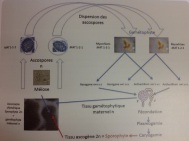
















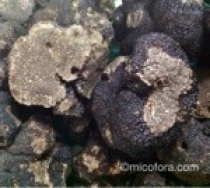








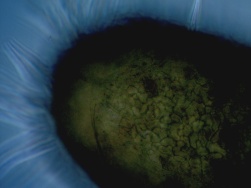












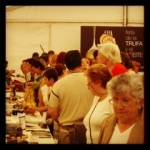



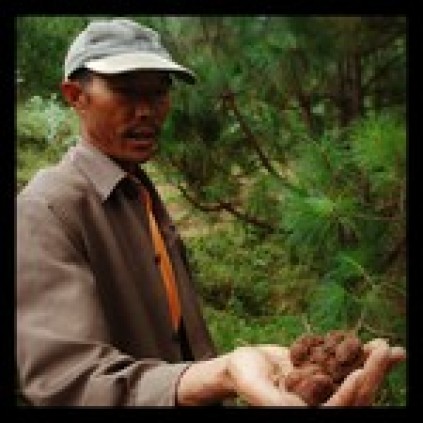


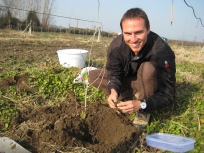






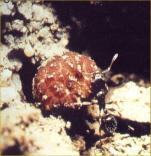


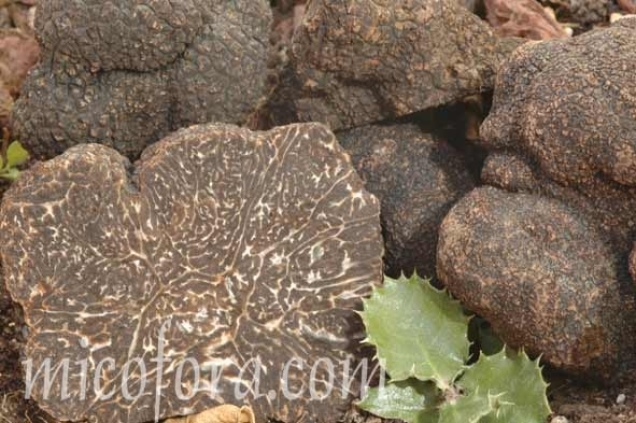
Enhorabona. En hi a q puje i baixe dos cops x semana de l Everest. Vosaltres també arribareu molt alt.
Manel.
montes gracies Manel per l´empenta!